Burrell Homestead
Introduction
Text-to-speech Audio
Along the French Creek sits the Burrell Homestead, where five generations of Burrells worked and inhabited the homestead. The homestead capitalized on Lorain County’s agricultural trends in the nineteenth century – such as the successful introduction of cheese production to the homestead in the 1870s – and ventured into new agricultural practices under the Sheffield Manual Labor Institute.
Images
The Burrell Homestead’s farmhouse, built circa 1820.
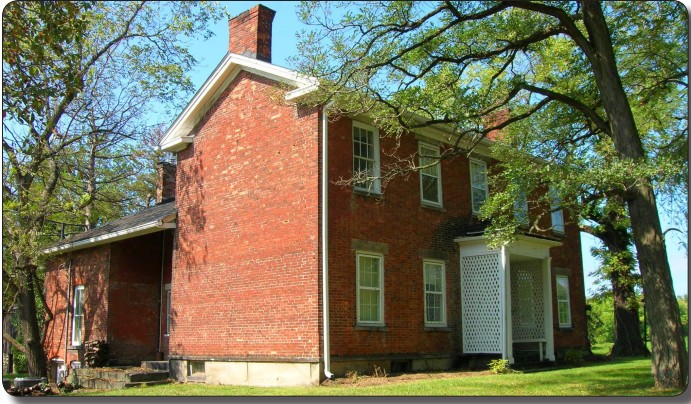
The north parlor of the Burrell’s farmhouse where the Sheffield Manual Labor Institute classes were held.
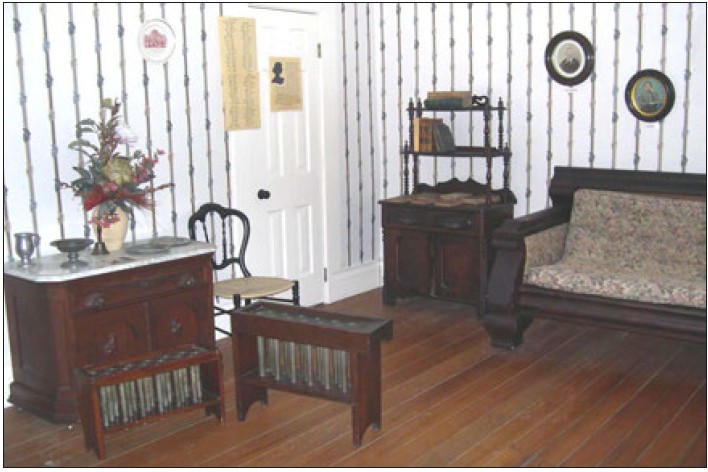
The Burrell Homestead’s cheese factory, built circa 1870.
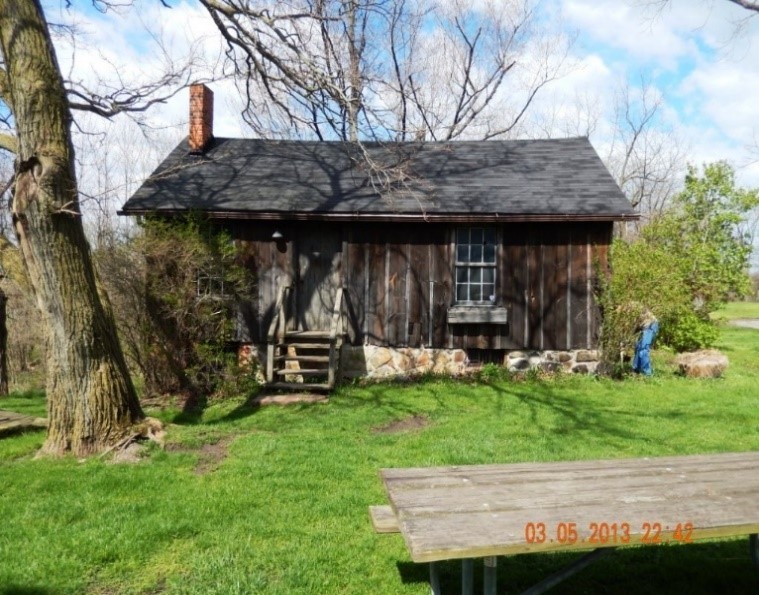
A portion of the Burrell Homestead’s dairy herd in the late 1800s.
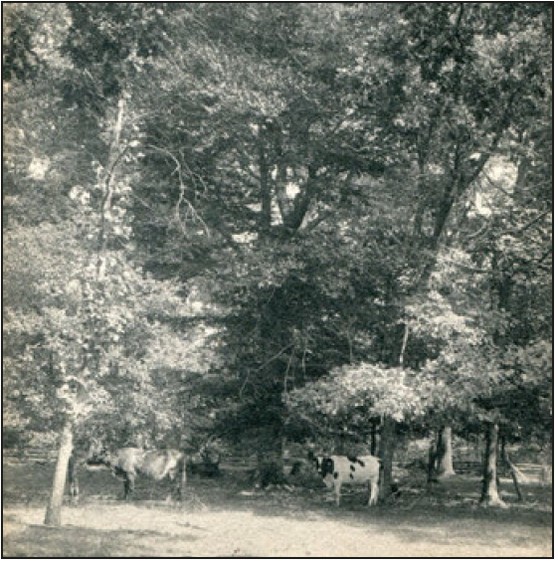
The Burrell Homestead's agricultural production for 1872, 1892, and 1898 obtained from the Lorain County Assessor Tax Statements.
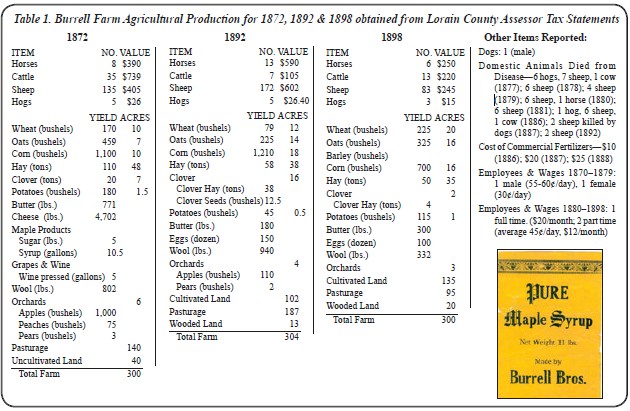
Backstory and Context
Text-to-speech Audio
Archaeological evidence reveals that the land was once a camp and ceremonial site for American Indians during the pre-Columbian era. Much for the same reasons that the Burrells chose this land, the Native Americans likely favored the homestead as a ceremonial and camping site because of the natural defense that French Creek provided, which flows in a ravine behind the farmhouse, and the abundant flora and fauna along the creek.
The Burrell family arrived to Sheffield Village in 1816 when the schooner Fire Fly sailed them up the Black River to the mouth of French Creek. In 1820, Jabaz and Mary settled their homestead with the construction of their brick farmhouse, which makes it one of the oldest brick structures in Lorain County. With their 300-acres, the Burrells divided their land for cropland, pastureland, orchards, vineyards, and maple woodlots and built two barns and a granary.
Robbins Burrell succeed his father as head of the homestead in 1825. Because of his family’s connection to Oberlin College and Conservatory, the school offered the Burrell Homestead as the location for an agricultural branch for their institution. In 1836, Robbins was appointed as a Practical Farmer for Oberlin College and the Sheffield Manual Labor Institute was established. The branch provided practical agricultural education to men, women, and African Americans while offering them payment for their labor. The farmhouse served as a classroom and dormitory for students and Robbins himself led farm instruction.
While it was operational, the Sheffield Manual Labor Institute was a leader in experimental agriculture for Lorain County. In partnership with Oberlin, the Burrell Homestead imported and planted 25,000 mulberry trees for silk production, which was thought to accommodate men and women’s labor needs. But as a result of the clay soil that was unsuitable for sustaining the mulberry trees, a summer drought, and a lack of proper management for the project, the experiment turned out to be an expensive failure.
The Sheffield Manual Labor Institute, however, closed after its first year. To receive its charter, the State of Ohio required the institute to deny education and training to Black students. Rather than compromise its commitment to abolitionism, Robbins Burrell and the rest of the institute’s Board of Trustees decided to close the school. At the time the homestead was a major stop on the Underground Railroad. Freedom seekers hid in the Burrell’s granary, which connected to tunnels leading down to the Black River, until they could cross Lake Erie into Canada.
Edward Burrell, the eldest son of Robbins Burrell, became the next head of the homestead in 1869. Behind the farmhouse he constructed a wood-sided cheese factory for commercial production of cheese and butter. Cheese production became a lucrative industry for Lorain County in the 1860s and 1870s, where a pound could sell for anywhere between 4 and 15 cents. The homestead yielded enough milk to produce 25 pounds of cheese daily. The Burrells also milked sheep and goats for cheese production. At its peak, the homestead produced 4,700 pounds of cheese in 1872 and 1,150 pounds of butter in 1878. As the demand for drinking milk increased with population growth, cheese production began to decline in the 1880s. Out of the 45 cheese factories that once thrived in Lorain County, the Burrell’s factory is one of the few still in existence.
In 1969, Jabaz and Mary Burrell’s great-great-grandchildren established the Historic Burrell Homestead Fund. As the last generation of Burrells to grow up in the farmhouse and with no children of their own, the fund would ensure that the homestead was preserved and cared for after their deaths. Today, the French Creek Nature Center of the Lorain County Metro Parks owns and manages the homestead. The brick farmhouse and wooden cheese factory are the only structures that remain from the original property.
Sources
“Agricultural Production on a Pioneer Homestead.” The Village Pioneer: Journal of the Sheffield Village Historical Society and Cultural Center 9, no. 3 (2014): 2-5.
“Cheese Industry in Sheffield.” The Village Pioneer: Journal of the Sheffield Village Historical Society and Cultural Center 6, no. 3 (2011): 12-13.
“Journeys of the Founding Pioneers of Sheffield.” The Village Pioneer: Journal of the Sheffield Village Historical Society and Cultural Center 8, no. 4 (2013): 7-9.
Redmond, Brian G and Brian L. Scanlan. “Archaeological Investigations at the Burrell Orchard Site (33Ln15): 2008 Season.” Cleveland Museum of Natural History, Archaeological Research Report No. 156 (2009): 1-51.
Rhoades, Nikki. “The Native American Dwelling Site Found Near Cleveland Is A Historical Wonder.” Only in Your State. Cleveland: July 3, 2019. https://www.onlyinyourstate.com/ohio/cleveland/native-american-site-cle/
“Sheffield Manual Labor Institute (1836-1837).” The Village Pioneer: Newsletter of the Sheffield Village Historical Society & Cultural Center 3, no. 1 (2008): 7-9.
Image 1 courtesy of The Village Pioneer: Journal of the Sheffield Village Historical Society & Cultural Center, Vol 3 No. 1 and the Sheffield Village Historical Society.
Image 2 courtesy of The Village Pioneer: Journal of the Sheffield Village Historical Society & Cultural Center, Vol 3 No. 1 and the Sheffield Village Historical Society.
Image 3 courtesy of Sheffield Village Historical Society
Image 4 courtesy of The Village Pioneer: Journal of the Sheffield Village Historical Society & Cultural Center, Vol 9 No. 3 and the Sheffield Village Historical Society.
Image 5 courtesy of The Village Pioneer: Journal of the Sheffield Village Historical Society & Cultural Center, Vol 9 No. 3 and the Sheffield Village Historical Society.
